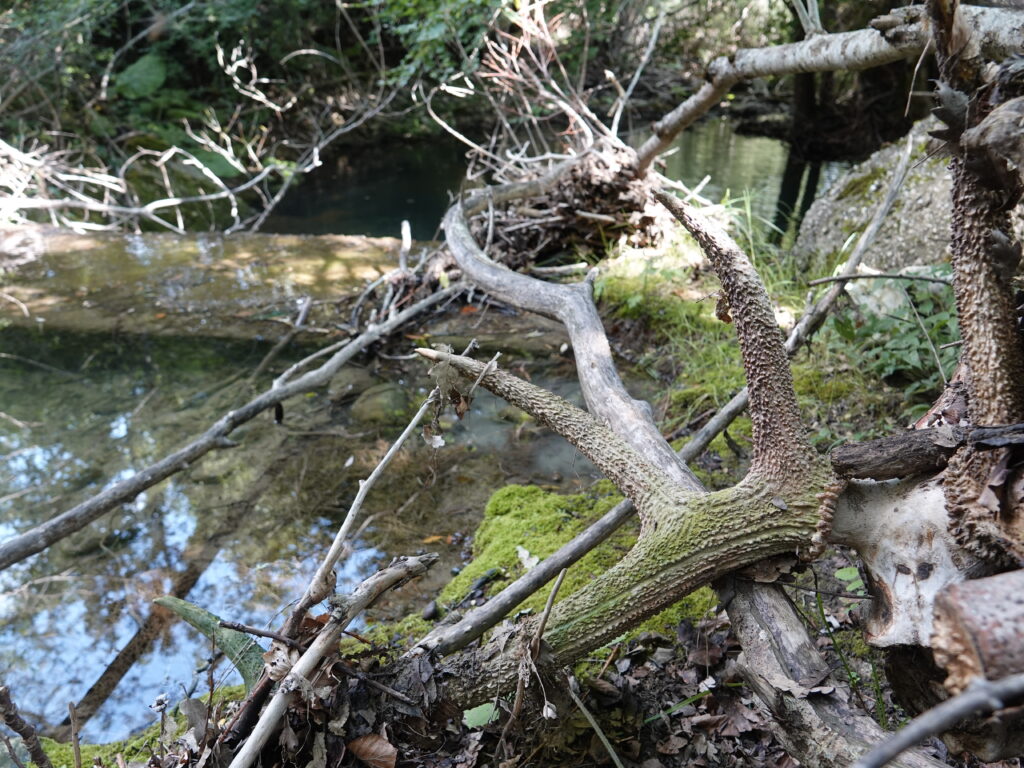Supported by funding from the Open Rivers Programme, Rewilding Apennines will oversee the removal of five weirs on the Giovenco River. This will breathe new life into the river ecosystem and deliver benefits to local communities.
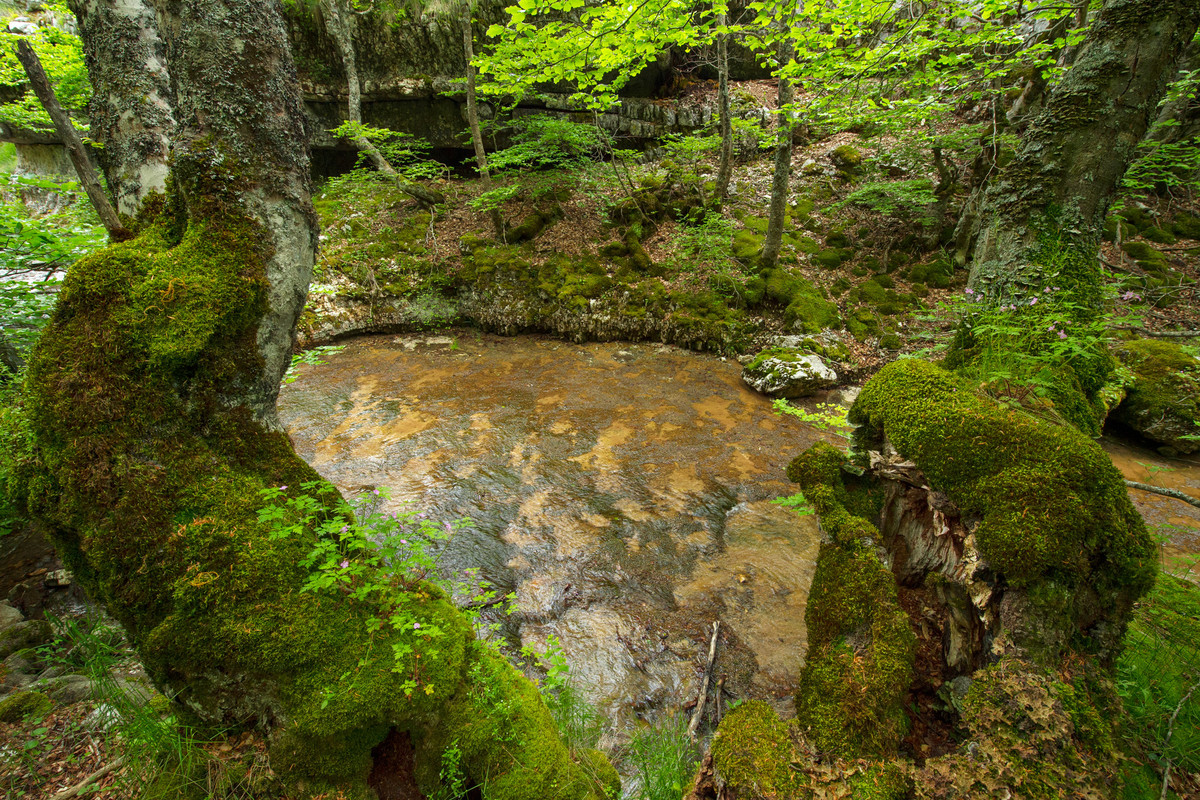
Rewilding Apennines has secured 157,000 euros in funding from the Open Rivers Programme to remove a series of weirs on the Giovenco River, which flows from south to north in the Abruzzo, Lazio and Molise National Park. The ambitious “GIOV & GO – A free-flowing Giovenco” initiative is the first of its kind in the entire Apennine region.
The intervention will see the removal of five concrete barriers separated by 80-metre intervals, together with adjacent concrete riverbank walls. This will re-establish ecological and functional connectivity along more than 11 kilometres of the Giovenco, significantly improving habitat quality, enhancing aquatic and riparian biodiversity, and enhancing the overall ecological balance of the riverine watershed.
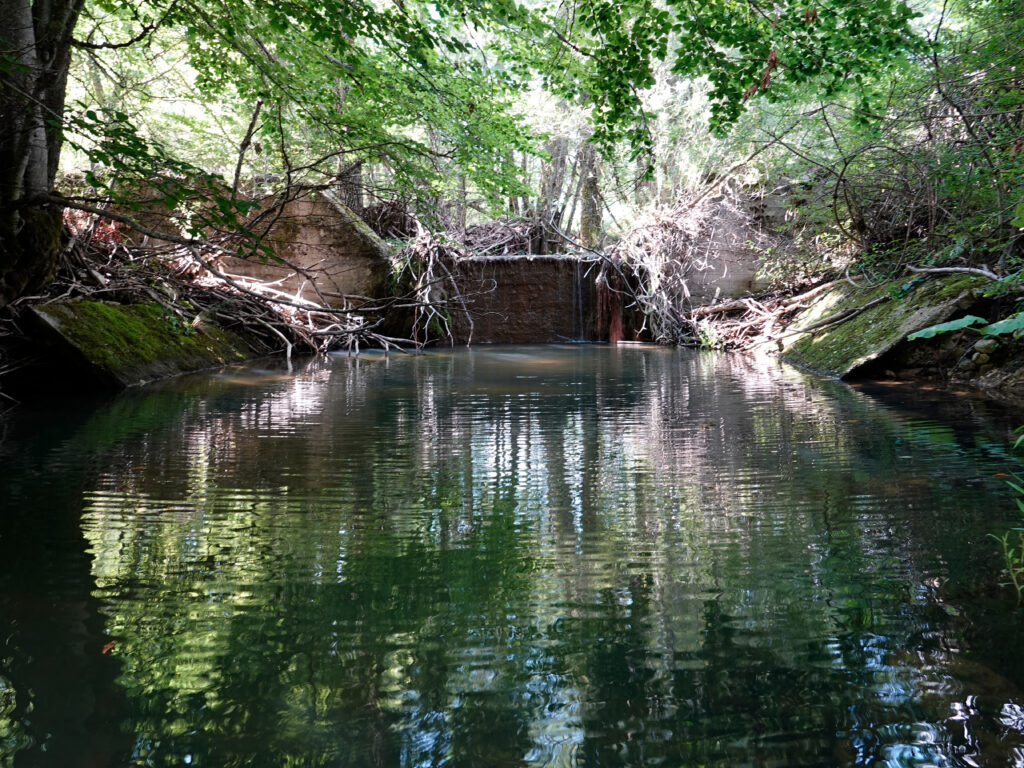
Artificial barriers are considered one of the main threats to aquatic and riparian biodiversity on a global scale. They significantly degrade river ecosystems by causing habitat loss and fragmentation, altering the distribution of sediments and nutrients, and concentrating pollutants.
The weir removal initiative aligns fully with European policies on watercourse management, which aim to restore biodiversity and ecological connectivity. The efforts of the Rewilding Apennines team will contribute to achieving one of the fundamental goals of the European Biodiversity Strategy, which aims to restore free-flowing conditions on at least 25,000 kilometres of European rivers by 2030.
Wide-ranging benefits
The removal of weirs on the Giovenco River will deliver significant ecological and socioeconomic benefits.
- Restoration of river connectivity: the removal of barriers will result in the unobstructed flow of water, facilitating the movement and presence of protected and vulnerable native aquatic species at risk of extinction, such as the white-clawed crayfish and Mediterranean trout. Riparian vegetation will also have the opportunity to reclaim habitat, delivering wider benefits to many other animal species, particularly the European otter, which is naturally recolonising the area. Other mammals, as well as birds and insects, will also benefit from the restoration of natural habitats and a healthier, more connected ecosystem.
- Improvement of river morphology: the removal of rigid bank defence structures will allow the river to resume its natural processes of erosion and sedimentation, creating meanders and diverse habitats. The removal of the weirs, which currently trap sediments, will not only restore the transport of such material downstream, but also help to reverse the trend of localised erosion caused by the acceleration in water flow at the weir faces.
- Community engagement and sustainable development: this initiative also aims to strengthen the connection between the river and local communities, highlighting the beauty and significance of the area. Educational and awareness-raising activities will increase understanding of the importance of interventions aimed at enhancing the river ecosystem, and highlight how communities can benefit from them economically – for example, through the development of nature-based tourism in the Giovenco Valley.

A free-flowing river is a healthy river
The efforts of the Rewilding Apennines team to restore the Giovenco form part of the burgeoning global river restoration movement. Similar efforts to remove barriers across the world are increasingly breathing new life into waterways and enhancing biodiversity.
The removal of barriers on the Giovenco could also lead to a “domino effect”, with this pioneering intervention serving as a catalyst for further barrier removals. These could take place on both on the same river – restoring natural flow conditions along a 25-kilometre stretch – and in other poorly connected waterways across the region, such as the Liri River.
“Removing these weirs will free the river to repair itself,” says Rewilding Europe’s Head of Landscapes Fabien Quétier. “This initiative exemplifies rewilding’s approach to nature recovery, with relatively small and targeted interventions such as dam removal unlocking nature’s huge potential to restore itself. We are very proud to be supporting this ground-breaking initiative, and hope it can be replicated elsewhere in the Central Apennine region.”
Essential collaboration
Key local institutions, such as the Abruzzo, Lazio, and Molise National Park, and the Municipality of Bisegna, are supportive of the weir removal on the Giovenco. The Park authority, in particular, has helped by carrying out educational and awareness-raising activities in the Giovenco Valley. The Municipality of Bisegna is also contributing by promoting actions within the emerging “Giovenco River Pact” with local stakeholders, further enriching opportunities for communities.
Complementing the funding provided by the Open Rivers Programme, financial support for the initiative has been provided by Rewilding Europe, which has been part of the European movement for free-flowing rivers for many years as a founding partner of Dam Removal Europe.
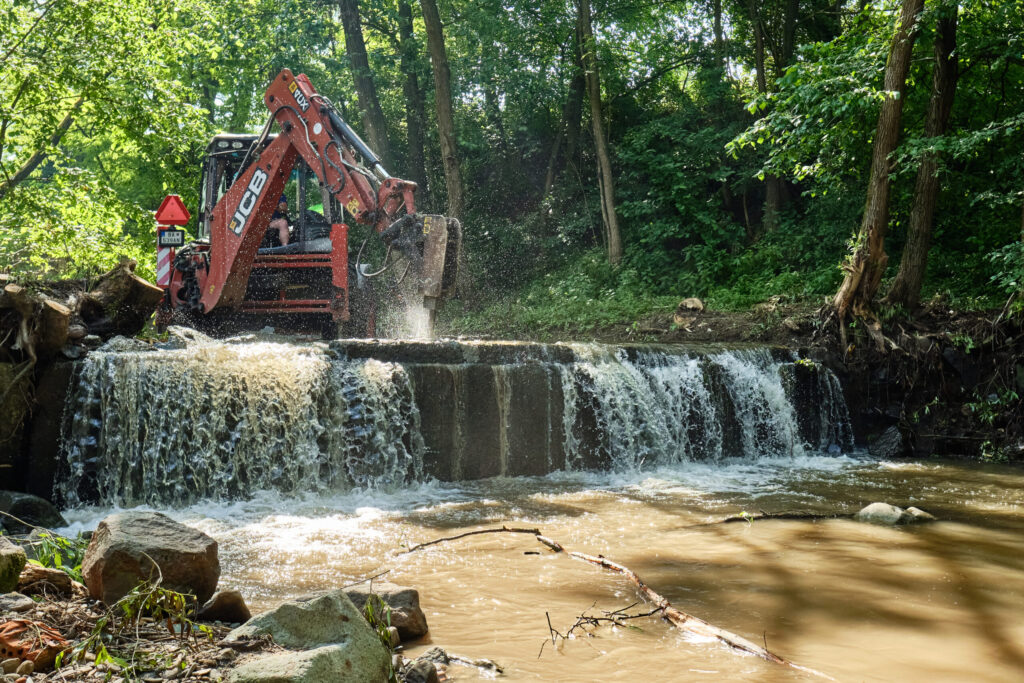
To oversee the technical and design side of the initiative, Rewilding Apennines engaged a team of technical and scientific consultants, including environmental engineer Giandomenico Mercuri and naturalist Ileana Schipani, who were involved in every aspect of the work. Their expertise has been essential in ensuring the effectiveness of the weir removal process, and that the intervention meets relevant safety standards and the ecological needs of the area.
“Goal 6 of the United Nations 2030 Agenda aims to ensure access to safe drinking water, improve sustainable water resource management, and protect aquatic ecosystems,” says Luciano Sammarone, Director of the Abruzzo, Lazio, and Molise National Park. “Today, with climate change posing a growing threat, river restoration is more vital than ever for the protection and enhancement of aquatic ecosystems and biodiversity. I hope this is just the first of many interventions on the Giovenco River to restore it to health. Once again, collaboration between multiple institutional and private entities has provided solutions, demonstrating that working for the common good is possible.”
Why remove the weirs?
The decision to proceed with the removal of the weirs on the Giovenco has been driven by a series of technical and environmental considerations:
- Hydraulic functionality: originally built to stabilise the riverbed, the weirs have led to the erosion of both the banks and the riverbed itself in several stretches, preventing sediments from being naturally transported along the river.
- Obsolescence: the ongoing deterioration of the weirs has raised serious questions regarding the costs of potential maintenance, which is also necessary to ensure public safety.
- Hydraulic safety: an in-depth analysis of hydraulic safety along the entire valley was conducted to ensure the removal of the weirs will not increase flood risk. The initiative has been approved by the District Basin Authority of the Southern Apennines – and received authorisation from the Regional Civil Engineering Authority – because it has been shown that the demolition of these barriers will not increase flood risk in populated areas downstream. It will also enhance drainage conditions in adjacent areas.
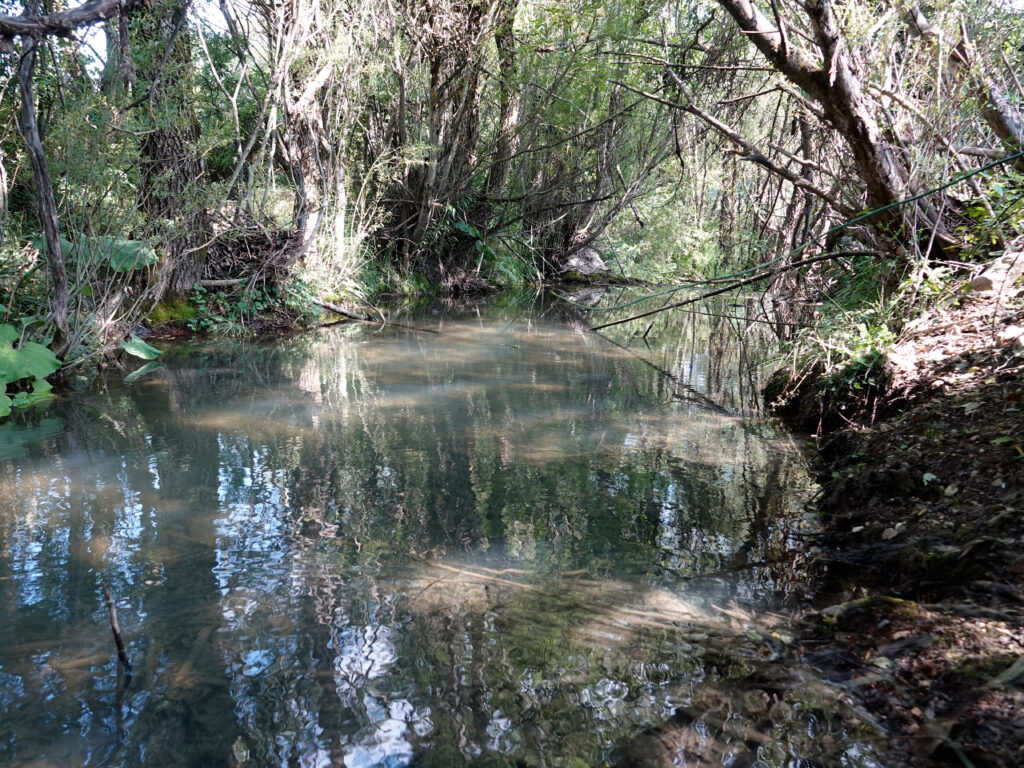
The consultants engaged in the initiative have focused on minimising environmental impacts at the weir removal site. The riverbed will remain undisturbed by the machinery involved the weir removal process, river sediments will be distributed along the riverbed, measures will be taken to avoid interrupting the riparian vegetation corridor, and debris from the work will be handled carefully to minimise contamination and environmental disturbance.
“Rewilding Apennines is proud to be engaged in this restoration work on the Giovenco,” says Mario Cipollone, Rewilding Apennines Team Leader. “These efforts represent a first step towards restoring threatened freshwater ecosystems across the Central Apennine region. As an essential resource for life, rivers deserve to be protected and returned to health, which is also vital for the well-being of Iocal communities. I would like to offer my sincere thanks to all the partners that have made this initiative possible. The Municipality of Bisegna and the Abruzzo, Lazio, and Molise National Park for their early support, and the Regional Civil Engineering Authority for evaluating and approving the proposed intervention. I am now looking forward to restoring the health and natural beauty of this stretch of the Giovenco River.”
